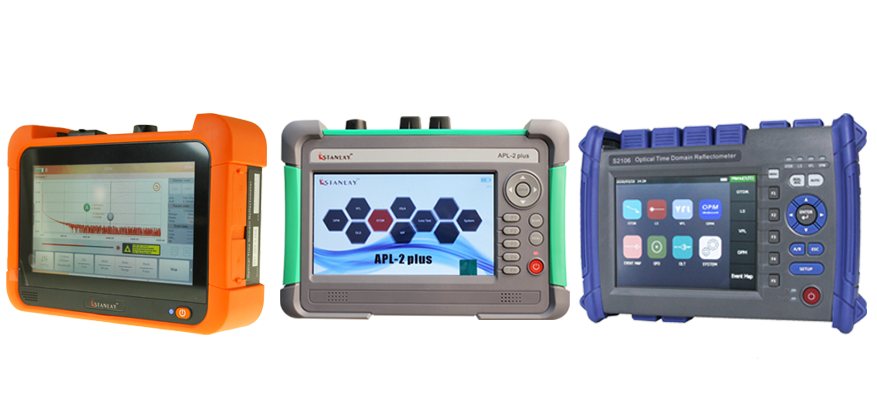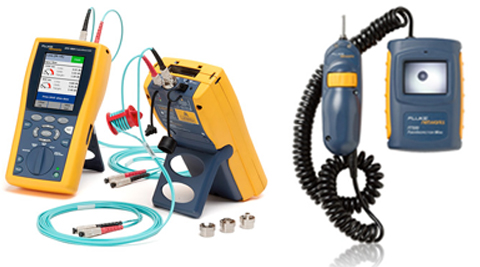What You Need to Know About fibre testing equipment for QA labs
Wiki Article
Checking Out Advanced Techniques in Fiber Measurement and Their Market Influence
In today's textile industry, accurate fiber measurement is crucial for enhancing production processes and meeting sustainability objectives. With the rise of ingenious imaging and analytical tools, you can get deeper understandings into fiber structure and composition. This change not only improves effectiveness but likewise aligns with industry criteria. As these sophisticated methods progress, you could wonder exactly how they can additionally transform making techniques and effect the future of fabrics.The Value of Accurate Fiber Measurement in Textile Production

Ingenious Imaging Technologies for Fiber Analysis
When it pertains to fiber evaluation, ingenious imaging technologies are video game changers. High-resolution microscopy strategies and spectroscopic analysis techniques provide you with thorough insights right into fiber structure and composition. These developments not just enhance accuracy yet additionally streamline your dimension processes.High-Resolution Microscopy Techniques
High-resolution microscopy techniques have actually reinvented fiber analysis, allowing scientists to envision fibers at extraordinary levels of detail. With approaches like scanning electron microscopy (SEM) and transmission electron microscopy (TEM), you can observe fiber morphology, surface area functions, and cross-sections with impressive quality. These methods enable you to identify between different fiber kinds and analyze their structural integrity. You'll locate that high-resolution imaging assists determine flaws, additions, and various other crucial features that can affect product efficiency. Developments in digital imaging software program have boosted picture handling, making it less complicated to analyze and analyze information. By embracing these innovative methods, you can drive greater precision in fiber dimension and add to improvements in various markets, from fabrics to compounds.Spectroscopic Analysis Techniques
Spectroscopic evaluation methods have actually become powerful tools for fiber characterization, providing understandings that enhance high-resolution microscopy. You can utilize strategies like infrared (IR) spectroscopy, which aids determine the chemical composition of fibers by measuring molecular vibrations. Raman spectroscopy provides another layer of detail, permitting you to assess molecular frameworks with scattering of single light. These methods not only improve your understanding of fiber homes however likewise enable the detection of impurities and architectural variations. By integrating spectroscopic techniques with standard microscopy, you acquire an extra comprehensive sight of fibers' physical and chemical attributes, improving your study precision. Inevitably, these technologies can especially influence material option and quality control in numerous sectors.Advanced Analytical Tools and Their Applications
As you check out the domain name of fiber measurement, you'll uncover that sophisticated analytical devices play a crucial duty in boosting accuracy and performance. Strategies like high-performance fluid chromatography (HPLC) and gas chromatography (GC) enable you to examine fiber composition with impressive precision. These devices enable you to identify particular elements and contaminants, ensuring high quality control in your products.Additionally, making use of scanning electron microscopy (SEM) offers you a thorough view of fiber framework, aiding you understand how various treatments influence performance. Modern software application also simplifies data evaluation, making it much easier to analyze complex outcomes and work together throughout groups.
Impact of Fiber Measurement on Manufacturing Efficiency
While specific fiber measurement might appear like a little detail, it substantially affects manufacturing efficiency in the textile market. When you spend in exact fiber dimension techniques, you can enhance resources use and lessen waste. This causes better resource allocation, allowing you to create top quality textiles without overusing resources.By understanding fiber qualities, you can customize production procedures to certain materials, boosting your process and decreasing downtime. For example, recognizing the specific tensile stamina of fibers allows you readjust equipment setups for optimum efficiency. This not just speeds up manufacturing however also assures consistent item quality.Moreover, precise fiber dimension assists you recognize concerns early in the assembly line, stopping costly reworks and delays (fibre testing equipment). In general, applying sophisticated fiber dimension methods simplifies operations, boosts efficiency, and ultimately boosts success. In today's open market, every detail counts, and precise fiber dimension is a game-changerSustainability Considerations in Fiber Analysis Techniques
When you analyze fiber, it's vital to ponder sustainable methods that can minimize environmental impact. Utilizing environment-friendly dimension techniques and reducing waste in your evaluations can substantially enhance your total sustainability. Additionally, incorporating lifecycle analysis right into your strategies can provide a more clear photo of your fiber's environmental footprint.Eco-Friendly Measurement Techniques
Taking into consideration the growing demand for sustainability in different industries, adopting environmentally friendly measurement techniques for fiber assessment has actually become vital. You can begin by utilizing non-toxic solvents and naturally degradable products in your testing procedures. These choices not just reduce ecological influence but likewise boost safety and security for your group. Implementing electronic measurement strategies can additionally decrease waste, as they typically call for fewer physical examples and sources. Additionally, leveraging innovative technologies like near-infrared spectroscopy can produce accurate outcomes without harmful chemicals. By selecting these greener techniques, you add to a much more sustainable future while keeping high criteria in fiber high quality. Eventually, integrating green methods right into your fiber evaluation not just aligns with customer values however likewise increases your brand's online reputation.Minimizing Waste in Assessment
To effectively lower waste in fiber analysis, you can implement methods that enhance your screening processes and reduce source intake. Start by maximizing sample sizes; using smaller examples can generate precise results while preserving products. Next off, invest in multifunctional equipment that enables numerous tests without needing numerous tools, decreasing power and resource use. You must also think about embracing digital tools for data collection and analysis, which can reduce down on paper waste and enhance effectiveness. Frequently training your team on lasting methods ensures everyone's aboard with waste decrease objectives. Teaming up with providers that prioritize sustainability can better improve your efforts, allowing you to assess fibers while maintaining a commitment to environmental duty.Lifecycle Evaluation Integration
Integrating lifecycle analysis (LCA) right into fiber assessment methods can greatly boost sustainability initiatives. By taking a look at the environmental effects of fibers from manufacturing to disposal, you can identify locations for enhancement. This technique helps you recognize resource consumption, energy use, and waste generation throughout the fiber's life.When you integrate LCA, you're not just measuring fiber features; you're likewise considering the environmental impact. This holistic view allows you to make educated choices that prioritize sustainability. You might select fibers that require less sources or have a lower carbon influence. Eventually, LCA equips you to enhance procedures, lower waste, and promote environmentally friendly options in fiber manufacturing, straightening your practices with worldwide sustainability goals.
Market Criteria and Rules Shaping Fiber Measurement
As the need for high-quality fiber products grows, understanding the market standards and policies that govern fiber dimension ends up being crucial. These standards ensure consistency, accuracy, and safety in the measurement process, which eventually affects product high quality. Organizations like ASTM International and ISO established forth requirements that producers have to comply with, covering different aspects such as fiber recognition, toughness testing, and moisture web content analysis.
Future Trends in Fiber Measurement and Textile Production
Exactly how will innovations in innovation reshape fiber measurement and fabric production? You'll see a change toward automation and real-time data analysis, improving precision and effectiveness. Smart sensing units will keep an eye on fiber buildings continually, enabling instant adjustments in manufacturing. This suggests you can expect higher top quality textiles with less waste.Moreover, AI and machine knowing will certainly anticipate fads in consumer preferences, enabling manufacturers to adjust swiftly. fiber measurement. By integrating blockchain modern technology, you'll have far better traceability of materials, guaranteeing sustainability and ethical sourcing.Virtual reality and enhanced fact will play a duty as well, supplying immersive training experiences for workers on fiber handling and manufacturing processes.As you embrace these changes, the fabric sector will transform into a more responsive, lasting, and innovative market, setting brand-new standards for quality and efficiency. The future of fiber dimension and fabric manufacturing is intense, and it's time to jump on boardRegularly Asked Questions
What Are one of the most Common Fiber Kind Measured in the Market?
In the industry, you'll often encounter all-natural fibers like cotton and woollen, along with artificial options such as polyester and nylon. Each type has unique residential properties, impacting their measurement and application in different products.How Do Fiber Dimensions Influence Customer Item Quality?
Fiber measurements straight affect consumer product high quality by guaranteeing uniformity, durability, and performance. When you recognize these metrics, you can make educated selections, causing boosted complete satisfaction and much better total experiences with the items you utilize.What Training Is Needed for Fiber Dimension Technicians?
To come to be a fiber dimension service technician, you'll require customized training in fabric science, dimension techniques, and devices procedure. Hands-on experience and accreditations can improve your skills, making you competent in precise fiber evaluation and quality assurance.Are There Any Kind Of Certifications for Fiber Measurement Professionals?
Yes, there are certifications for fiber dimension professionals. You can go after alternatives like the Licensed Fiber Optics Specialist (CFOT) or numerous industry-specific qualifications that enhance your expertise and integrity in fiber dimension and screening.Just How Can Small Companies Execute Fiber Measurement Techniques Efficiently?
You can carry out fiber dimension techniques successfully by buying fibre testing equipment economical tools, training your team, and developing clear procedures. Collaborate with market experts and constantly refine your procedures to improve precision and efficiency with time.Report this wiki page